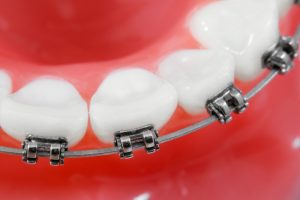 Brackets are the most important part of traditional braces. They hold the wires that move the teeth and correct the patient’s bite. Nowadays, there are many types of brackets to choose from.
Brackets are the most important part of traditional braces. They hold the wires that move the teeth and correct the patient’s bite. Nowadays, there are many types of brackets to choose from.
Let’s take a look.
What are brackets?
Brackets are the small square-shaped pieces attached to the front and side of the teeth. They are bonded to the tooth with a special adhesive. When they are attached to the patient’s teeth, they act as handles that let the orthodontic device grab onto each tooth and shift them.
The archwire that puts pressure on the teeth to move is threaded through the brackets. They are then affixed to the brackets using elastic ligatures.
Brackets can be ultramini, mini, or large. Their base can be straight or curved. They can also be classified by width into narrow, medium, or wide.
Each bracket has a slot for the archwire. There may also be hooks for attaching the elastics. Brackets are available in various compositions like stainless steel and ceramic.
Types of brackets
Orthodontic brackets can be made from ceramic, plastic, stainless steel, cobalt chromium, titanium, gold, and other materials. The most common ones are:
Stainless steel brackets
Most brackets orthodontists use today are made of austenitic stainless steel. These brackets are hygienic and don’t corrode. The problem with these brackets is that they don’t look very aesthetically pleasing.
Ceramic brackets
These brackets are designed to match the color of your teeth, making them “invisible.” Made from ceramic material, these brackets are stain-resistant and biocompatible. The downside of this type of bracket is that it can scrape the opposing teeth, and the debonding process can damage the enamel.
Plastic brackets
Like ceramic brackets, these are also made to match your teeth color. Made from high-strength plastics, these brackets are strong, have lower friction, and are easy to attach without damaging the tooth.
Check out these bracket goals here.


Great content on Dental braces. Thank you for sharing the information with us. For any Dental queries kindly visit https://www.rajkumarsdentistry.in/